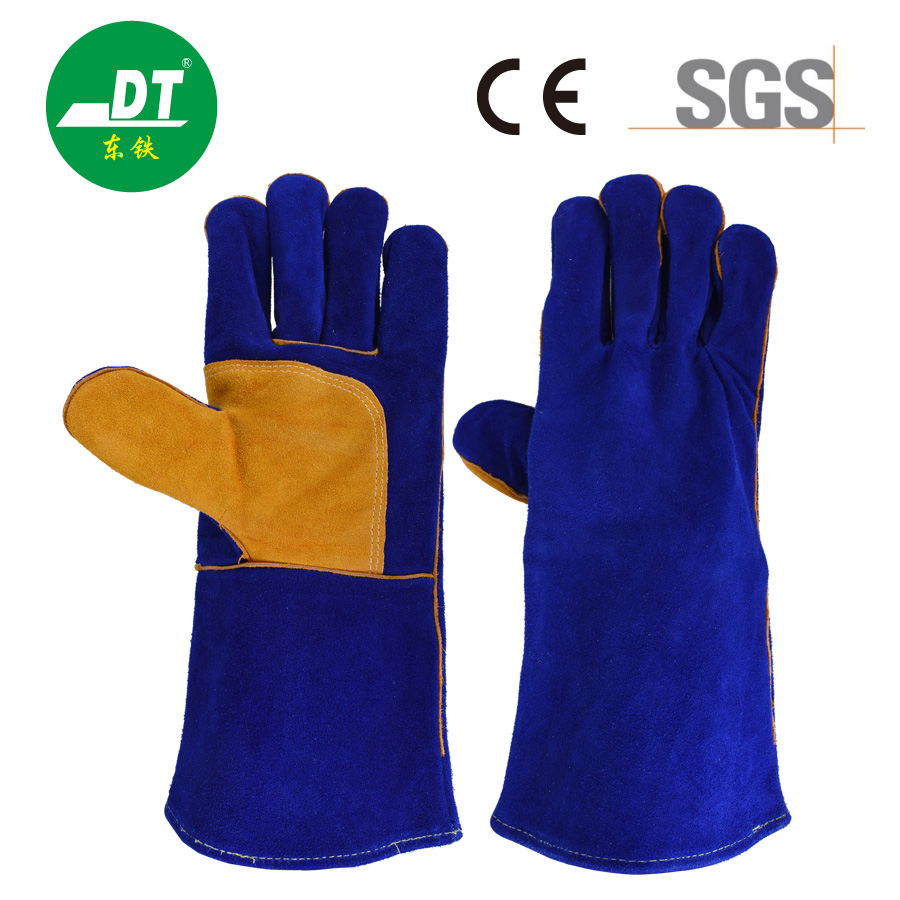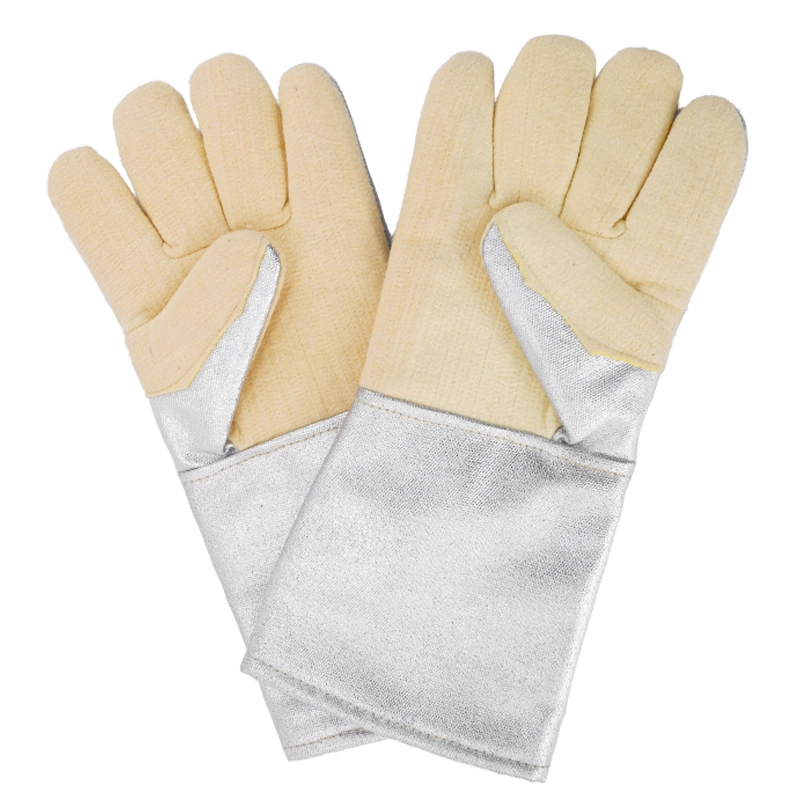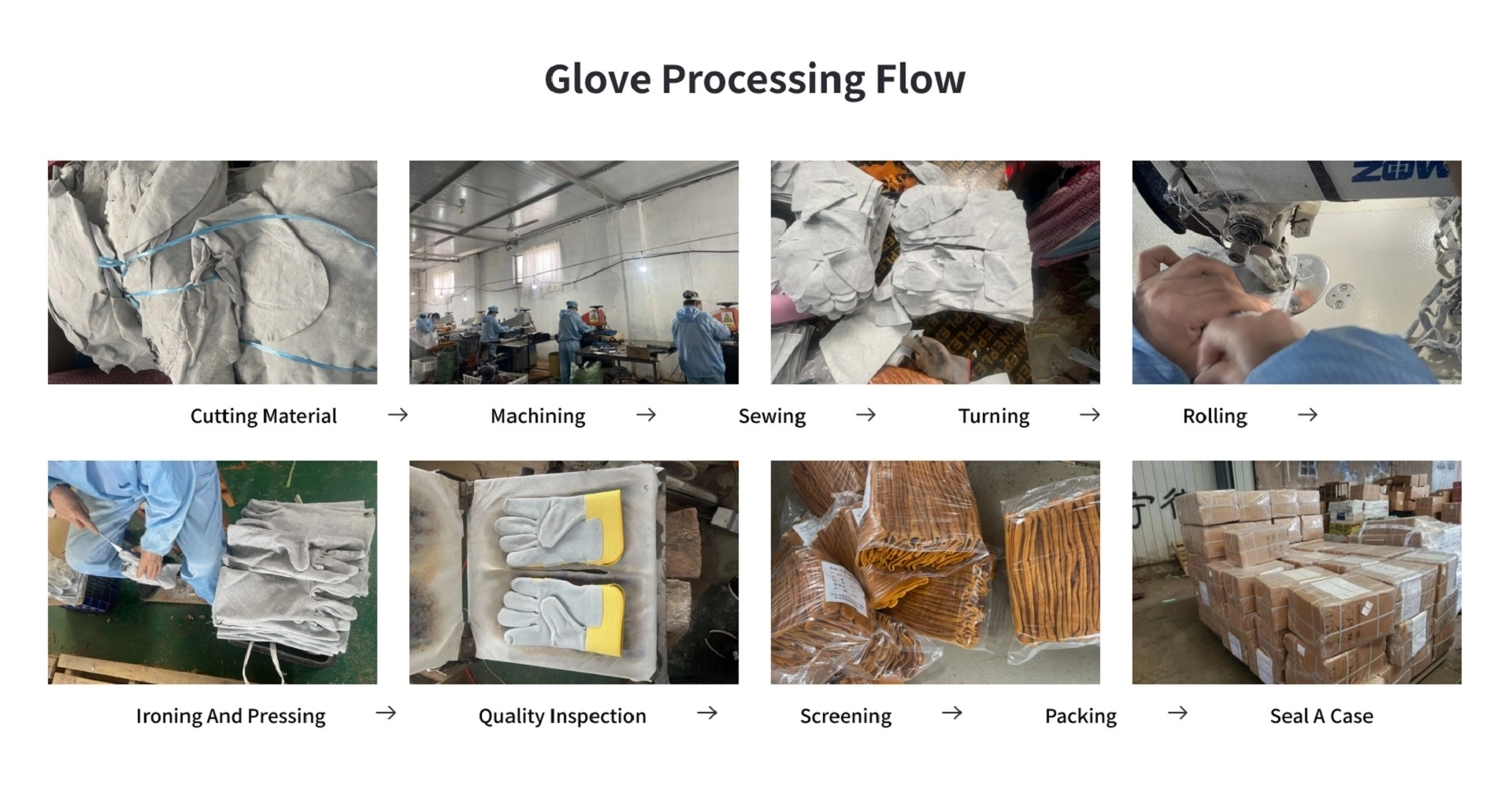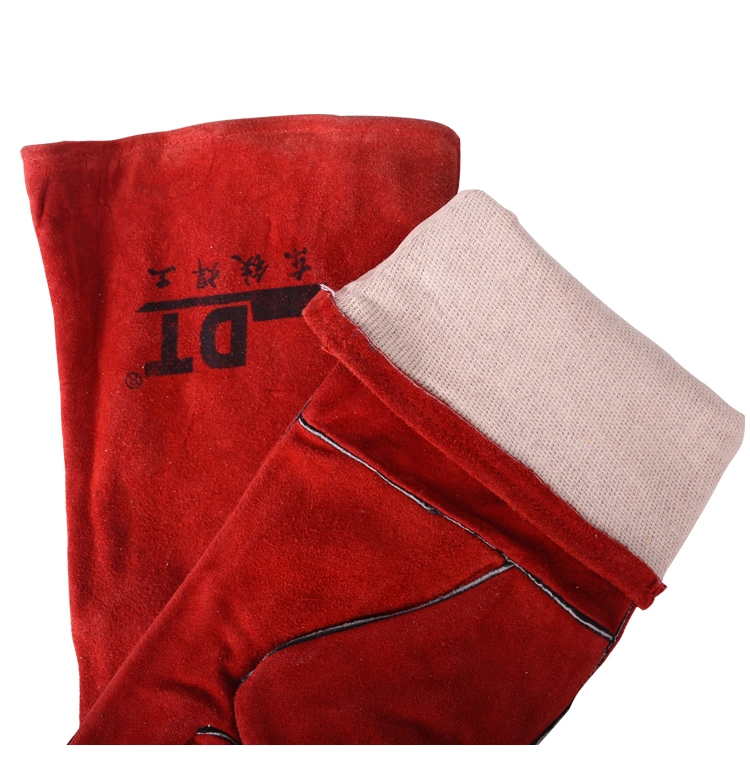A Comprehensive Guide to Choosing the Right Welding Glove for Different Types of Welding
As a manufacturer of professional-grade safety gear, I, Allen, have spent decades on the factory floor overseeing the production of millions of welding gloves. I’ve seen firsthand how the right pair of gloves can be the deciding factor between a job well done and a trip to the emergency room. This article is your complete guide to understanding the critical relationship between the different types of welding and the specific welding glove designed for each task. It's built on years of experience and countless conversations with procurement officers like Mark from the USA, who value safety, durability, and performance above all. Read on to discover how to equip yourself or your team for ultimate safety and performance.
Why Are Welding Gloves So Important for Safety and Performance?
The importance of welding gloves cannot be overstated. When you're working, the temperatures involved in any welding process can be extreme. Arc welding, for example, can generate heat reaching thousands of degrees Celsius. This intense heat, combined with flying sparks, spatter, and harmful UV radiation, poses a significant threat to a welder's most valuable tools: their hands. A quality welding glove is the first and most crucial line of defense. The primary role of welding gloves is to protect your hands from these thermal and mechanical hazards. A good glove is designed to protect you from burns, cuts, and abrasions.
However, the function of a welding glove goes beyond just protection. The right glove also enhances a welder's performance. Safety and comfort are two sides of the same coin. An ill-fitting or overly stiff glove can lead to fatigue, reduced dexterity, and poor control over the welding torch or electrode holder. This not only affects the quality of the weld but can also lead to accidents. Therefore, choosing the right welding gloves means finding a balance between robust protection and the ergonomic design needed to perform the welding job effectively. This is why, as a manufacturer, we don't just create one type of glove; we engineer a variety of welding gloves for different needs, ensuring every welder has the right tool for their specific task. The right pair of gloves can significantly improve a welder's confidence and efficiency.
A high-quality pair of welding gloves can provide the necessary protection without sacrificing the control needed for precise work. The impact of a good glove on daily operations is immense. It contributes to a safer work environment, reduces the risk of injury-related downtime, and ultimately supports higher quality workmanship. Every professional knows that safety gear is not an expense but an investment in their well-being and productivity. When it comes to welding, a dependable welding glove is one of the most essential pieces of that investment.

What Are the Main Types of Welding Processes?
To choose the right welding gloves, you first need to understand the environment they'll be used in. Welding isn't a one-size-fits-all activity. The three main types of welding commonly used in the industry are Stick welding, MIG welding, and TIG welding. Each process has unique characteristics that dictate the level of heat, spatter, and dexterity required from the welder, and consequently, the type of glove needed.
-
Shielded Metal Arc Welding (SMAW), widely known as Stick welding, is one of the oldest and most versatile welding processes. It uses a consumable electrode stick covered in flux to lay the weld. Stick welding is known for producing intense heat and a significant amount of spatter. It’s a rugged process often used outdoors and on thick, dirty, or rusty materials. The high heat and flying molten metal demand the highest level of thermal protection from a glove.
-
Gas Metal Arc Welding (GMAW), or MIG welding, uses a continuously fed wire electrode and a shielding gas to protect the weld pool from contamination. MIG welding is generally considered easier to learn than other methods and is prized for its speed and efficiency, making it popular in manufacturing and fabrication shops. While it produces less spatter than stick welding, it still generates substantial heat, requiring a glove that balances good heat resistance with enough dexterity to control the MIG gun trigger.
-
Tungsten Inert Gas (TIG) Welding, or Gas Tungsten Arc Welding (GTAW), is a more precise and complex welding process. It uses a non-consumable tungsten electrode to create the arc, and the welder manually feeds a separate filler rod into the weld pool with their other hand. TIG welding produces very little to no spatter and offers incredible control, resulting in clean, high-quality welds. This process is often used for delicate work on thin materials like aluminum and stainless steel. The emphasis here is on feel and dexterity, so a TIG welding glove must be much thinner and more flexible.
How Do Different Types of Welding Affect Your Choice of a Glove?
The connection between the type of welding and your glove choice is direct and critical. You wouldn't use a sledgehammer to hang a picture frame, and similarly, you shouldn't use a heavy-duty stick welding glove for delicate TIG work. Each welding process presents a different set of risks and requires a different level of control. Matching your welding glove to the process is fundamental for both safety and performance.
For instance, the intense environment of stick welding means your glove's primary feature must be heat resistance. A thick, multi-layered leather glove is non-negotiable. In contrast, the precision required for TIG welding demands a glove that acts like a second skin. Here, dexterity and tactile sensitivity are paramount. Using a thick stick glove for TIG welding would make it nearly impossible to properly manipulate the filler rod. This is why TIG welding gloves are typically made from thinner, softer leathers like goatskin or deerskin.
MIG welding sits in the middle. The welding glove for this process needs to be a hybrid, offering solid heat protection against sustained high heat from the MIG gun, while still providing enough flexibility to operate the trigger comfortably for long periods. You need a glove that is more robust than a TIG glove but less bulky than a stick glove. Understanding these nuances is the key to selecting the right welding gloves. An inappropriate glove not only compromises the quality of your work but, more importantly, puts you at risk.
What Should You Look For in a Stick (SMAW) Welding Glove?
When selecting a glove for Stick welding, your priority list should be topped by durability and maximum heat protection. This welding process is messy and hot. You need a glove that can take a beating. Look for gloves made from thick, durable leather, such as split cowhide. Split leather, which comes from the lower layers of the hide, has a rough texture that provides excellent durability and heat resistance, making it ideal for the high-amperage applications of stick welding. A good stick welding glove will often feature reinforcements in high-wear areas like the palm and thumb.
The construction of the glove is also crucial. A stick welding glove should have a full lining, often made of cotton or wool, to provide an extra layer of insulation against the high heat. This lining also absorbs sweat, adding to the safety and comfort of the welder. Furthermore, stitching is a critical detail. Look for gloves stitched with Kevlar® thread. This material is incredibly strong and, most importantly, flame-resistant, ensuring the seams of your glove won't fail under exposure to heat and sparks.
Finally, consider the cuff length. Stick welding gloves should have a long cuff, typically 4 to 6 inches or more, to protect the forearms from spatter and UV radiation. This extended coverage is an essential safety feature. In my experience, a well-made stick welding glove feels substantial and protective. It’s less about feeling the work and more about shielding you from it, allowing you to focus on laying a strong, consistent bead without fear of getting burned.

What Makes a Good MIG (GMAW) Welding Glove?
MIG welding requires a glove that strikes a fine balance between protection and dexterity. Since you're holding a MIG gun and operating a trigger, you need more flexibility than you would for stick welding, but you still need robust protection from sustained heat and spatter. A high-quality MIG welding glove is often made from top-grain cowhide or a combination of leathers. Top-grain leather is smoother and offers better dexterity than split leather while still being very durable.
The design of a MIG welding glove is often more ergonomic. Many feature a "wing thumb" or "keystone thumb" design, which allows for greater freedom of movement and a more natural grip on the MIG gun. Reinforcements on the palm, thumb, and index finger are common, as these are the areas that experience the most wear and heat exposure. The goal is to create a glove that feels less cumbersome, reducing hand fatigue during long welding sessions. The right gloves will feel secure and allow for easy manipulation of the gun.
Like stick gloves, MIG welding gloves should be lined for insulation and comfort, and Kevlar® stitching is a must-have for durability. The cuff length is typically medium, providing adequate forearm protection without being overly restrictive. When choosing a MIG glove, you’re looking for that sweet spot: a glove that's tough enough to handle the heat but flexible enough that you can work all day without your hands feeling cramped or tired. It's a workhorse glove for a workhorse welding process.
Why Do TIG (GTAW) Welding Gloves Need to Be Different?
TIG welding is all about precision and control. It's often compared to an art form, and the welder needs a glove that allows for maximum tactile sensitivity. This is the one type of welding where protection takes a slight step back to prioritize dexterity. A TIG welding glove needs to fit like, well, a glove—snug and responsive. This allows the welder to precisely guide the torch with one hand while delicately feeding a thin filler rod with the other. Any bulkiness would make this intricate coordination impossible.
Because of this, TIG welding gloves are made from the softest, thinnest, and most pliable leathers available. Goatskin is the most popular choice due to its excellent tensile strength and soft, supple feel. Deerskin and sheepskin are also common. These materials allow the welder to feel the filler rod and make micro-adjustments, which is critical for producing the clean, perfect welds TIG is known for. The gloves are almost always unlined to maximize this feel.
A TIG welding glove will also have a much shorter cuff. Since TIG produces almost no spatter, the need for extensive forearm protection is reduced. A shorter cuff prevents the glove from bunching up at the wrist and interfering with movement. When I talk to expert TIG welders, they always emphasize the same thing: they need to feel the wire. The glove is not just a piece of safety gear; it's an extension of their hand that enables them to perform their craft. Choosing the right gloves is therefore absolutely essential for any serious TIG welder.

What Key Materials Are Welding Gloves Made From?
The material of a welding glove is its most defining characteristic, directly influencing its durability, heat resistance, and flexibility. As a manufacturer, we work with a range of materials to engineer the perfect glove for each application.
| Material | Primary Use | Key Characteristics |
|---|---|---|
| Split Cowhide | Stick Welding | Excellent durability, high heat resistance, cost-effective. Rough texture provides good abrasion resistance. |
| Top-Grain Cowhide | MIG Welding | Durable and water-resistant. Smoother and more flexible than split cowhide, offering a good balance of protection and dexterity. |
| Goatskin | TIG Welding | Very soft, supple, and strong. Offers the best dexterity and tactile sensitivity, making it perfect for precision work. |
| Deerskin | TIG/MIG Welding | Extremely soft and pliable, even when exposed to moisture. Conforms to the hand for superior comfort and dexterity. |
| Pigskin | MIG/General Use | Stays soft and pliable after getting wet. Has good abrasion resistance and is breathable. |
| Aluminized Fabric | High-Heat Applications | Reflects up to 95% of radiant heat. Used on the back of gloves for protection in extreme temperature environments like foundries. |
| Kevlar®/Aramid | Linings & Stitching | Inherently flame-resistant and offers exceptional cut and abrasion resistance. Critical for seams and protective linings. |
The choice of material is the foundation of any good welding glove. For instance, our High Temperature Resistant Gloves utilize a combination of aluminum foil and aramid thread to provide superior protection against radiant heat. In contrast, our standard cowhide leather gloves offer a fantastic all-around solution for general welding tasks. Each material is chosen to solve a specific problem and meet the demands of different welding operations.
How Can You Tell if a Welding Glove is High Quality?
For a procurement officer like Mark, identifying a high-quality glove from a subpar one is crucial for business. It’s not just about the price tag; it's about value, reliability, and the safety of the end-user. From my factory floor perspective, there are several key indicators of a well-made welding glove. First, inspect the stitching. Look for tight, even, and consistent seams. As mentioned, the gold standard is Kevlar® thread. If a manufacturer cuts corners here using standard cotton thread, the glove will fall apart under heat stress.
Second, examine the leather itself. It should be consistent in thickness and free from blemishes, scars, or weak spots. Squeeze the material; a good quality leather glove will have a supple yet durable feel. Low-quality leather often feels stiff, papery, or has a strong chemical smell. The construction quality also tells a story. Look for features like welted seams, where an extra strip of leather is sewn into the seam to protect the stitching from sparks and abrasion. A reinforced thumb strap is another sign of a durable, well-thought-out glove.
Lastly, don't underestimate the importance of fit and comfort. A quality glove is designed with the user in mind. It should fit snugly without being restrictive. The finger length should be appropriate, and the thumb design should allow for a natural range of motion. We spend a lot of time perfecting our patterns because we know that a comfortable glove is a glove that gets worn correctly, ensuring safety on the job. A quality welding glove is a complete package of smart design, superior materials, and meticulous construction.
What is the Role of Certifications Like CE and ANSI in Welding Glove Safety?
For anyone purchasing safety equipment on a large scale, certifications are not just suggestions; they are a guarantee of quality and compliance. In the world of personal protective equipment (PPE), two of the most important standards are CE (Conformité Européenne) for the European market and ANSI (American National Standards Institute) for the North American market. These certifications provide objective, third-party verification that a glove meets specific performance criteria for protection.
When you see a CE or ANSI marking on a welding glove, it means the glove has been rigorously tested for things like abrasion resistance, cut resistance, tear strength, puncture resistance, and, crucially for welding, thermal performance. For example, the EN 407 standard (part of the CE marking) specifically rates a glove's performance against flammable, contact heat, convective heat, radiant heat, and small and large splashes of molten metal. This data allows a buyer to move beyond marketing claims and make an informed decision based on proven performance.
As a manufacturer exporting globally, we ensure our products, from welding gloves to our Heat and Flame Resistant Cowhide Welding Work Apron, undergo this testing. It's a critical part of our commitment to quality. For a procurement officer, demanding certified products is the best way to manage risk. It ensures the safety gear you provide to your workers or sell to your customers is verifiably safe and reliable, addressing major pain points like inconsistent quality and ensuring you're providing equipment that truly protects.

How Do You Properly Care For and Inspect Your Leather Welding Gloves?
Even the best welding glove won't last forever, but proper care and regular inspection can significantly extend its life and ensure it continues to provide the necessary protection. You should get into the habit of inspecting your gloves before every single use. Look for any holes, tears, or cuts. Check the seams to ensure the stitching is intact and not unraveling. If a glove is saturated with oil or grease, it should be replaced immediately, as these substances can compromise the leather's flame resistance.
When it comes to cleaning, avoid soaking leather welding gloves in water, as this can cause them to become stiff and brittle once they dry. For light cleaning, you can use a damp cloth to wipe away dirt and grime. If they do become wet, allow them to air dry slowly at room temperature. Never try to speed up the process with a direct heat source like a heater or open flame, as this will ruin the leather.
Storing your gloves properly is also important. Keep them in a cool, dry place away from direct sunlight and moisture. Don't just toss them in the bottom of a toolbox where they can be punctured or damaged by other tools. Taking these simple steps will not only save you money in the long run by maximizing the life of your gloves but is also a fundamental aspect of welding glove safety. A compromised glove is a safety hazard, and a quick daily inspection is the best way to ensure your hands remain protected.
Key Takeaways for Choosing Your Next Welding Glove
Making the right choice in a welding glove is a critical decision for any welder. It's a choice that impacts safety, comfort, and the quality of your work.
- Match the Glove to the Process: The most important rule is to select a glove specifically designed for the type of welding you are doing. Heavy-duty, heat-resistant gloves for Stick; balanced, durable gloves for MIG; and thin, dexterous gloves for TIG.
- Material Matters: Understand the properties of different leathers. Cowhide is the all-around workhorse, while goatskin offers superior feel and dexterity for precision tasks.
- Quality is in the Details: Always inspect the stitching (look for Kevlar®), the consistency of the leather, and features like reinforced palms and welted seams. These are the hallmarks of a well-made, durable glove.
- Don't Ignore Certifications: Look for CE and ANSI ratings. These provide objective proof that the glove meets industry-recognized safety standards for thermal and mechanical protection.
- Inspect and Care for Your Gear: A glove is only effective if it's in good condition. Regularly inspect for damage and store your gloves properly to ensure they are always ready to protect you.






